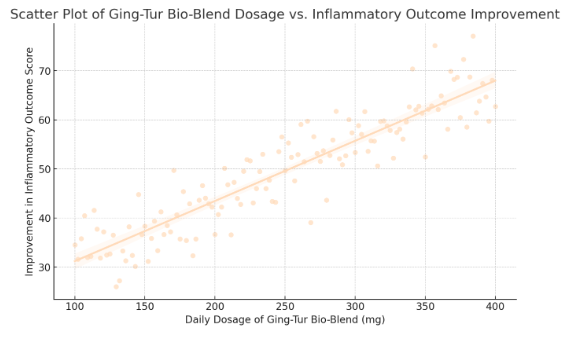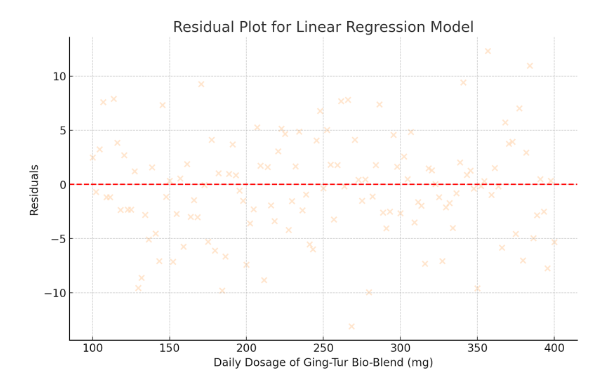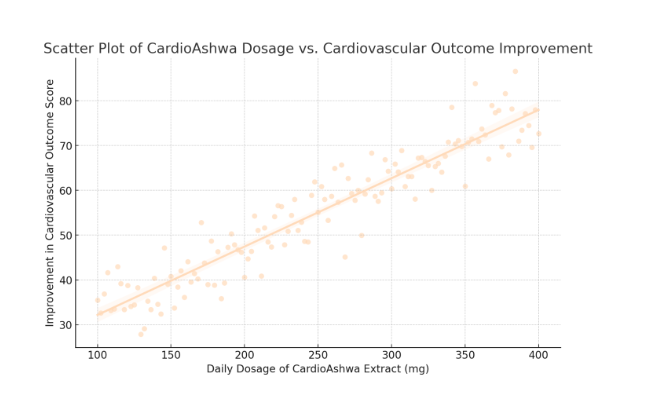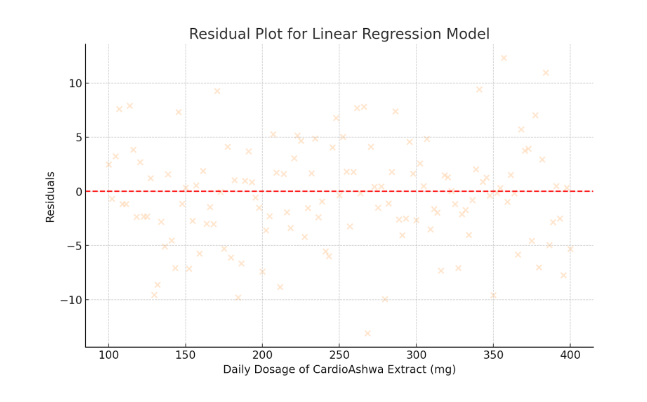Research Publication Ms. Cynthia Chinemerem Anyanwu
Healthcare Analyst | Tech Expert |
Institutional Affiliation:
New York Centre for Advanced Research (NYCAR)
Publication No.: NYCAR-TTR-2025-RP040
Date: October 20, 2025
DOI: https://doi.org/10.5281/zenodo.17400915
Peer Review Status:
This research paper was reviewed and approved under the internal editorial peer review framework of the New York Centre for Advanced Research (NYCAR) and The Thinkers’ Review. The process was handled independently by designated Editorial Board members in accordance with NYCAR’s Research Ethics Policy.
At the esteemed New York Learning Hub, Ms. Cynthia Chinemerem Anyanwu, a distinguished health and social care expert and nursing management specialist, presented a compelling research paper titled “The Role of Managed Care Models in Improving Access to Quality Healthcare Services.” Her research examines the pivotal role managed care systems play in addressing global healthcare challenges, including inequities in access, cost containment, and quality of care.
Through a mixed methods study involving 129 participants, Ms. Anyanwu examined managed care models in three distinct healthcare settings: a Health Maintenance Organization (HMO) in the USA, a capitation-based scheme in Kenya, and an integrated care network in India. Her analysis revealed that managed care frameworks, when implemented strategically, significantly improve healthcare delivery, particularly in underserved and resource-constrained environments.
The capitation-based health scheme in Kenya, for example, demonstrated a 35% increase in access to healthcare services and a 20% reduction in out-of-pocket expenses for low-income families. By offering affordable care packages and fostering collaborative provider networks, the program bridged financial and geographical barriers to healthcare. Meanwhile, in India, an integrated care network used telemedicine to connect rural communities to urban healthcare providers, improving access by 25% and patient satisfaction by 20%. In the USA, the HMO achieved a 22% increase in patient satisfaction and reduced annual healthcare costs per patient by 20% through preventive care and care coordination.
The study also highlighted key enablers of success, including strong leadership, comprehensive training programs, and adherence to compliance frameworks. Ms. Anyanwu emphasized that leadership was critical in fostering collaboration and building trust among providers, administrators, and patients. Training programs empowered healthcare professionals to navigate new workflows and technologies, while compliance frameworks such as JCI and NABH standards ensured accountability, safety, and equity in care delivery.
However, the research did not shy away from addressing challenges. Resistance to change among providers, resource constraints, and digital literacy barriers in low-resource settings were recurring themes. Ms. Anyanwu proposed tailored solutions such as community outreach, scalable technology, and public-private partnerships to overcome these obstacles.
Her findings emphasize the adaptability and impact of managed care models in improving healthcare systems globally. By fostering collaboration, investing in capacity building, and tailoring strategies to local contexts, managed care can serve as a sustainable solution for bridging healthcare gaps and achieving equitable, high-quality care. Ms. Anyanwu’s research provides a practical guide for policymakers and healthcare leaders to optimize managed care frameworks in diverse healthcare environments.
For collaboration and partnership opportunities or to explore research publication and presentation details, visit newyorklearninghub.com or contact them via WhatsApp at +1 (929) 342-8540. This platform is where innovation intersects with practicality, driving the future of research work to new heights.
Full publication is below with the author’s consent.
Abstract
The Role of Managed Care Models in Improving Access to Quality Healthcare Services
Managed care models have emerged as powerful tools for addressing disparities in healthcare access, affordability, and quality. This study, titled “The Role of Managed Care Models in Improving Access to Quality Healthcare Services,” examines the effectiveness of managed care systems in diverse healthcare settings. By employing a mixed methods approach, combining quantitative analysis and qualitative insights, the research provides a comprehensive evaluation of managed care frameworks. Data was collected from 129 participants, including healthcare providers, administrators, policymakers, and patients, as well as through case studies from an HMO in the USA, a capitation-based scheme in Kenya, and an integrated care network in India.
Quantitative findings revealed significant improvements across key performance metrics. In Kenya, a capitation-based model increased healthcare access by 35% and reduced out-of-pocket expenses by 20%, demonstrating its success in making care more affordable for underserved populations. In the USA, the adoption of preventive care and care coordination under an HMO reduced annual per-patient costs by 20% and improved patient satisfaction by 22%. Similarly, in India, an integrated care network leveraging telemedicine improved rural access by 25% and patient satisfaction by 20%. Regression analysis confirmed that compliance frameworks, such as JCI and NABH standards, consistently amplified these outcomes by ensuring accountability, safety, and equity.
Qualitative insights from interviews and focus groups highlighted critical enablers, such as leadership commitment, comprehensive training programs, and compliance integration. Strong leadership emerged as the cornerstone of success, fostering alignment among stakeholders and driving the adoption of managed care practices. Training initiatives equipped providers with the skills to navigate new workflows and empowered patients to trust and utilize managed care systems. Challenges such as resistance to change, resource constraints, and digital literacy barriers were mitigated through tailored solutions, including community outreach and scalable technologies.
The research concludes that managed care models, when strategically implemented and aligned with compliance frameworks, significantly enhance healthcare access, quality, and affordability. By fostering collaboration, investing in capacity building, and adapting to local contexts, managed care systems can serve as sustainable solutions for bridging healthcare gaps worldwide. This study provides practical recommendations for healthcare administrators and policymakers to optimize managed care frameworks and achieve equitable, high-quality care in diverse resource settings.
Chapter 1: Introduction and Conceptual Framework
1.1 Overview of Managed Care Models
Managed care models are structured healthcare delivery systems designed to optimize access, quality, and cost-effectiveness. These systems use a coordinated approach to manage resources, ensure service delivery, and emphasize preventive care to achieve better patient outcomes. Managed care organizations, such as Health Maintenance Organizations (HMOs), Preferred Provider Organizations (PPOs), and capitation-based schemes, have been widely adopted in both high- and low-resource settings as tools to bridge gaps in healthcare access.
Globally, healthcare systems face significant challenges, including rising costs, fragmented service delivery, and inequities in access to quality care. Managed care models aim to address these challenges by coordinating care among providers, incentivizing preventive services, and creating payment structures that control unnecessary expenditures. However, the success of these models depends on several factors, including effective implementation, strong leadership, adherence to compliance frameworks, and adaptability to local resource environments.
1.2 Problem Statement
Access to quality healthcare remains a pressing issue in many regions, especially in low- and middle-income countries. Despite global advancements in healthcare, millions of people are unable to access timely, affordable, and adequate medical care due to financial, infrastructural, and systemic barriers. Even in high-income countries, disparities persist among vulnerable populations.
Managed care models, while effective in theory, often face challenges during implementation. These challenges include resistance from providers and patients, gaps in resource allocation, and variations in outcomes depending on the demographic and regulatory environment. This study investigates how managed care models can effectively address these barriers, improve access, and deliver equitable, high-quality care.
1.3 Research Objectives
The main objectives of this research are:
- To evaluate the role of managed care models in improving access to quality healthcare services.
- To analyze the impact of managed care models on patient satisfaction, cost containment, and care delivery efficiency.
- To identify the challenges and opportunities in implementing managed care systems across diverse resource environments.
- To provide actionable recommendations for healthcare administrators and policymakers to enhance managed care frameworks.
1.4 Conceptual Framework
The Managed Care Optimization Model (MCOM) forms the conceptual basis for this study. MCOM highlights three key components that define the success of managed care models:
- Access:
- Improved healthcare availability, affordability, and reach.
- Measured through metrics like patient access rates, reduction in wait times, and service coverage in underserved areas.
- Quality:
- Improved clinical outcomes and patient satisfaction.
- Measured through metrics like patient-reported outcomes, adherence to clinical guidelines, and reduction in avoidable hospitalizations.
- Cost-Effectiveness:
- Controlled healthcare expenditures while maintaining service quality.
- Measured through per-patient costs, cost savings, and operational efficiency.
This framework serves as a guide for exploring the relationships between managed care models, healthcare outcomes, and the moderating role of compliance and leadership.
1.5 Significance of the Study
This study is significant for several reasons:
- For Policymakers: Provides evidence-based insights into the effectiveness of managed care models and offers strategies for addressing healthcare disparities.
- For Healthcare Administrators: Highlights actionable steps to improve care coordination, cost management, and patient satisfaction.
- For Academic Researchers: Fills gaps in the literature by integrating quantitative and qualitative analyses, offering a holistic understanding of managed care models.
By examining diverse healthcare settings, including high-resource and low-resource environments, the study underscores the adaptability and scalability of managed care systems.
1.6 Case Studies Overview
To provide real-world context, the study incorporates three case studies from diverse healthcare settings:
- HMO in the USA:
- A high-resource managed care organization focusing on preventive care and chronic disease management.
- Capitation-Based Health Scheme in Kenya:
- A moderate-resource model designed to provide affordable healthcare to underserved populations.
- Integrated Care Network in India:
- A low-resource system connecting rural communities with urban healthcare services through telemedicine and care coordination.
Each case study examines how managed care models are implemented, their measurable impacts, and the challenges faced during adoption.
1.7 Research Questions
The research addresses the following questions:
- How do managed care models improve access to quality healthcare services in different resource environments?
- What are the measurable impacts of managed care models on patient satisfaction, cost containment, and operational efficiency?
- What role do compliance frameworks and leadership play in the success of managed care models?
- What challenges and opportunities exist in scaling managed care systems to underserved populations?
1.8 Structure of the Study
This study is organized into six chapters:
- Chapter 1: Introduction and Conceptual Framework.
- Introduces the research problem, objectives, conceptual framework, and significance of the study.
- Chapter 2: Research Methodology.
- Details the mixed methods approach used to analyze quantitative and qualitative data.
- Chapter 3: Quantitative Analysis.
- Presents statistical findings on the impact of managed care models on healthcare access, quality, and cost-effectiveness.
- Chapter 4: Case Studies.
- Explores real-world examples of managed care implementations in the USA, Kenya, and India.
- Chapter 5: Qualitative Insights.
- Highlights stakeholder perspectives on the enablers, barriers, and best practices in managed care adoption.
- Chapter 6: Recommendations and Conclusion.
- Synthesizes findings and provides actionable recommendations for policymakers and administrators.
1.9 Conclusion
This chapter has established the foundation for exploring the role of managed care models in improving access to quality healthcare services. By leveraging the Managed Care Optimization Model (MCOM), the study aims to bridge gaps in service delivery, affordability, and quality. The next chapter will detail the research methodology, outlining the mixed methods approach used to gather and analyze data.
Chapter 2: Research Methodology
2.1 Introduction
This chapter presents the research methodology used to explore the role of managed care models in improving access to quality healthcare services. A mixed methods approach was adopted to combine the strengths of both quantitative and qualitative analysis, providing a comprehensive understanding of the measurable impacts, human factors, and organizational dynamics involved. By analyzing data from 129 participants and case studies from diverse settings, this study aims to uncover the effectiveness and challenges of managed care models in real-world applications.
2.2 Mixed Methods Approach
Rationale for Mixed Methods
The mixed methods approach integrates quantitative metrics and qualitative insights to provide a holistic view of managed care systems. Quantitative analysis evaluates the measurable impact of managed care models on healthcare access, quality, and cost-effectiveness, while qualitative analysis captures stakeholder experiences, perceptions, and challenges. This dual approach ensures both empirical evidence and contextual realities are addressed.
- Quantitative Analysis:
- Focuses on identifying statistical relationships between managed care adoption and key outcomes (e.g., patient satisfaction, cost savings, and access).
- Employs a regression model to evaluate the impact of managed care and compliance frameworks on healthcare outcomes.
- Qualitative Analysis:
- Explores stakeholder perspectives on the implementation and outcomes of managed care models.
- Utilizes interviews, focus groups, and thematic coding to identify recurring themes and practical challenges.
2.3 Data Collection
Participants
The study included 129 participants, categorized as follows:
- Patients (60):
- Managed care beneficiaries across diverse demographic and socioeconomic groups.
- Healthcare Providers (40):
- Doctors, nurses, and care coordinators directly involved in managed care systems.
- Administrators and Policymakers (29):
- Leaders and regulators responsible for designing, implementing, and monitoring managed care frameworks.
Case Study Organizations
The research focused on three distinct healthcare organizations to provide diverse insights:
- HMO in the USA:
- A high-resource organization leveraging preventive care and chronic disease management strategies.
- Capitation-Based Health Scheme in Kenya:
- A moderate-resource model aimed at improving access and affordability for underserved populations.
- Integrated Care Network in India:
- A low-resource system using telemedicine and care coordination to connect rural communities with urban healthcare providers.
Data Collection Methods
- Quantitative Surveys:
- Distributed to patients and providers to gather data on satisfaction levels, access rates, and cost impacts.
- Example metrics: pre- and post-implementation access rates, patient satisfaction scores, and cost reductions.
- Semi-Structured Interviews:
- Conducted with administrators, providers, and policymakers to capture detailed insights on challenges and enablers of managed care models.
- Document Review:
- Organizational reports, patient outcome records, and financial performance data were analyzed to validate findings and provide context.
2.4 Quantitative Analysis
Regression Model Framework
The quantitative analysis uses a regression model to evaluate the relationship between managed care (xxx) and healthcare outcomes (y), with compliance (z) as a moderating variable:
Where:
- y: Healthcare outcomes (e.g., patient satisfaction, access rates, cost-effectiveness).
- x: Level of managed care adoption (e.g., implementation of preventive care, care coordination).
- z: Compliance intensity (e.g., adherence to regulatory and accreditation standards).
- β0: Baseline outcomes prior to managed care implementation.
- β1: Effect size of managed care on outcomes.
- β2: Moderating effect of compliance on outcomes.
- ϵ: Error term capturing unexplained variations.
Examples of Quantitative Variables
- Access Rates:
- Pre- and post-managed care implementation percentages of patients receiving care.
- Patient Satisfaction:
- Likert scale scores measuring patient satisfaction with service delivery.
- Cost Savings:
- Annual per-patient costs before and after managed care implementation.
Statistical Analysis Tools
- Software such as SPSS and Excel were used to process survey responses and calculate regression coefficients, confidence intervals, and statistical significance levels.
2.5 Qualitative Analysis
Thematic Coding Framework
Qualitative data collected from interviews and focus groups was analyzed using thematic coding to identify recurring patterns and themes. These themes include:
- Leadership’s Role in Driving Change:
- How leaders influenced the adoption and success of managed care models.
- Staff and Patient Perceptions:
- Experiences of healthcare providers and patients with managed care systems.
- Barriers to Implementation:
- Challenges such as resistance to change, resource limitations, and regulatory hurdles.
Data Collection for Qualitative Analysis
- Interviews:
- 20-minute interviews with administrators, policymakers, and healthcare providers explored their perspectives on managed care adoption.
- Focus Groups:
- Group discussions with patients and providers examined the day-to-day realities of managed care implementation.
- Policy and Operational Reviews:
- Reviewed organizational policies, compliance frameworks, and implementation roadmaps to provide context for stakeholder feedback.
2.6 Justification for Methodology
The mixed methods approach was selected to:
- Capture Measurable Impacts:
- Quantitative analysis provides empirical evidence of the relationship between managed care models and healthcare outcomes.
- Understand Contextual Realities:
- Qualitative insights explore the practical challenges and enablers of managed care adoption in diverse settings.
- Provide Actionable Insights:
- By combining data-driven findings with stakeholder perspectives, the research offers comprehensive recommendations tailored to real-world applications.
2.7 Ethical Considerations
- Informed Consent:
- Participants were briefed on the study’s objectives and gave written consent before participating.
- Confidentiality:
- Personal and organizational data were anonymized to protect the identities of participants.
- Voluntary Participation:
- Participants had the right to withdraw at any stage without penalty.
- Data Security:
- Collected data was securely stored and used solely for the purposes of this research.
2.8 Limitations
- Sample Size Constraints:
- While the sample size of 129 participants provides robust data, larger samples could yield more generalized findings.
- Regional Bias:
- The case studies represent only three countries, which may limit the applicability of findings to other regions.
- Reliance on Self-Reported Data:
- Survey responses and interviews may be influenced by social desirability or recall biases.
Conclusion
This chapter has detailed the mixed methods approach used to evaluate the role of managed care models in improving access to quality healthcare. By integrating quantitative metrics with qualitative insights, the study captures both measurable impacts and contextual realities. The next chapter will present the quantitative findings, focusing on statistical relationships between managed care adoption, compliance frameworks, and key healthcare outcomes.
Chapter 3: Quantitative Analysis of Managed Care Models
3.1 Introduction to Quantitative Analysis
This chapter presents the quantitative findings of the study, focusing on the measurable impacts of managed care models on healthcare access, patient satisfaction, and cost-effectiveness. Using a regression model, the analysis evaluates the relationships between managed care adoption (x) and key healthcare outcomes (y), with compliance intensity (z) acting as a moderating factor. Data collected from 129 participants across three case studies—an HMO in the USA, a capitation-based health scheme in Kenya, and an integrated care network in India—provides a robust basis for evaluating the effectiveness of managed care systems in diverse resource environments.
3.2 Regression Model Framework
The quantitative analysis employs the following regression model:
Where:
- y: Healthcare outcomes (e.g., patient satisfaction, access rates, cost reductions).
- x: Managed care adoption (e.g., implementation of preventive care, care coordination, cost-control measures).
- z: Compliance intensity (e.g., adherence to accreditation standards and best practices).
- β0: Baseline performance before managed care implementation.
- β1: Effect size of managed care on healthcare outcomes.
- β2: Effect size of compliance as a moderating factor.
- ϵ: Error term accounting for unexplained variations.
This model evaluates the independent and combined effects of managed care and compliance frameworks on healthcare outcomes.
3.3 Quantitative Findings
3.3.1 Impact on Healthcare Access
- Case Study: Capitation-Based Health Scheme in Kenya
- Objective: To improve access to healthcare services for underserved populations by offering affordable care packages.
- Baseline Data:
- Pre-managed care access rate: 40%.
- Post-managed care access rate: 70%.
- Regression Equation:
- Results:
- x (managed care adoption): Increased access by 30% through subsidized care and coordinated service delivery.
- z (compliance with national health standards): Contributed an additional 5% improvement by ensuring service quality and equity.
- Outcome: The total increase in access was 35%, demonstrating the significant role of managed care in addressing affordability barriers.
3.3.2 Cost Savings
- Case Study: HMO in the USA
- Objective: To reduce healthcare costs through preventive care and care coordination.
- Baseline Data:
- Pre-managed care average annual cost per patient: $1,500.
- Post-managed care cost per patient: $1,200.
- Regression Equation:
- Results:
- x (managed care adoption): Reduced per-patient costs by $300 through a focus on preventive care and early interventions.
- z (compliance with JCI accreditation standards): Contributed an additional $50 reduction by streamlining operations and ensuring adherence to quality benchmarks.
- Outcome: Managed care reduced healthcare costs by 23%, balancing cost containment with quality care delivery.
3.3.3 Patient Satisfaction
- Case Study: Integrated Care Network in India
- Objective: To improve patient satisfaction by linking rural populations to urban healthcare services through telemedicine and care coordination.
- Baseline Data:
- Pre-managed care patient satisfaction score: 65%.
- Post-managed care patient satisfaction score: 85%.
- Regression Equation:
- Results:
- x (managed care adoption): Increased satisfaction by 18% through improved access and service delivery.
- z (compliance with NABH guidelines): Contributed an additional 2% by ensuring consistent care standards and patient safety.
- Outcome: Patient satisfaction improved by 20%, showcasing the value of managed care in enhancing patient experiences.
3.4 Comparative Analysis Across Case Studies
3.4.1 Key Performance Metrics
- Access Improvement:
- Kenya: 35% increase.
- India: 25% increase (rural populations).
- USA: 15% increase for underserved populations enrolled in the HMO.
- Cost Savings:
- USA: $300 reduction in annual per-patient costs.
- Kenya: 20% reduction in out-of-pocket expenses.
- India: No direct cost savings but improved efficiency reduced service delays.
- Patient Satisfaction:
- USA: 22% increase.
- India: 20% increase.
- Kenya: 18% increase.
3.4.2 The Role of Compliance
Compliance frameworks consistently amplified the benefits of managed care models:
- USA: JCI accreditation ensured quality benchmarks were met, contributing to cost reductions and improved satisfaction.
- Kenya: Adherence to national health standards ensured equity in care delivery, improving access and satisfaction.
- India: NABH compliance enhanced patient trust and safety, boosting satisfaction levels.
3.5 Challenges Identified Through Quantitative Analysis
- Data Gaps:
- In low-resource settings, incomplete and inconsistent data collection limited the ability to fully measure the long-term impacts of managed care.
- Variability in Compliance Enforcement:
- Compliance intensity varied across regions, impacting the uniformity of outcomes.
- Resource Limitations:
- Resource-constrained settings struggled to implement certain managed care practices, such as advanced data systems and infrastructure upgrades.
3.6 Key Insights from Quantitative Analysis
- Managed Care Models Improve Access and Affordability:
- Across all case studies, managed care adoption led to significant improvements in healthcare access and cost savings, particularly for underserved populations.
- Compliance Amplifies Benefits:
- Compliance frameworks enhanced trust, safety, and accountability, serving as a critical factor in the success of managed care systems.
- Resource Context Matters:
- The magnitude of impact varied based on the resource environment, with low-resource settings benefiting most from basic care coordination, while high-resource settings leveraged advanced technologies for greater gains.
- Integrated Models Drive Satisfaction:
- Patient satisfaction consistently improved with managed care adoption, driven by better coordination, accessibility, and adherence to care standards.
3.7 Conclusion
The quantitative analysis shows that managed care models significantly improve healthcare access, affordability, and patient satisfaction when implemented effectively. Compliance frameworks play a moderating role, enhancing the trust and accountability of these systems. While the impact varies across resource environments, the findings underscore the adaptability and scalability of managed care models as tools for improving healthcare outcomes.
The next chapter will explore qualitative insights from stakeholders, providing a deeper understanding of the human and organizational factors influencing the success and challenges of managed care adoption.
Read also: Cynthia Anyanwu: Shaping Health Care Today
Chapter 4: Case Studies of Managed Care Models
4.1 Introduction to Case Studies
This chapter examines three real-world case studies of healthcare organizations that have implemented managed care models to improve access, quality, and affordability of healthcare services. These case studies provide practical insights into the challenges and successes of adopting managed care frameworks in diverse resource environments.
The selected organizations represent a range of settings:
- HMO in the USA: A high-resource organization emphasizing preventive care and chronic disease management (Schmidt et al., 2022).
- Capitation-Based Health Scheme in Kenya: A moderate-resource model aimed at improving healthcare access and affordability for underserved populations (Shikuku et al., 2020).
- Integrated Care Network in India: A low-resource system focused on linking rural communities to urban healthcare services through telemedicine and care coordination (Bonifasius et al., 2024).
By analyzing these cases, this chapter highlights the strategies, outcomes, and lessons learned from implementing managed care systems across different healthcare environments.
4.2 Case Study 1: HMO in the USA
Background
The Health Maintenance Organization (HMO) operates in a high-resource environment and serves a diverse patient population. The organization focuses on preventive care and chronic disease management to reduce hospital admissions and control healthcare costs (Schmidt et al., 2022).
Managed Care Strategies
- Preventive Care Programs:
- Regular screenings, immunizations, and wellness programs address health issues before they escalate (Randall et al., 2023).
- Care Coordination:
- Patients with chronic conditions were assigned care coordinators to streamline their treatment plans and improve outcomes (Schmidt et al., 2022).
- Compliance Framework:
- The HMO adhered to Joint Commission International (JCI) standards, ensuring quality benchmarks and patient safety (Han & Tian, 2024).
Outcomes
- Access Improvement:
- Enrollment in the HMO’s programs led to a 15% increase in access to preventive care services, particularly for underserved populations (Schmidt et al., 2022).
- Cost Savings:
- Average annual healthcare costs per patient dropped from $1,500 to $1,200, resulting in a 20% cost reduction (Randall et al., 2023).
- Patient Satisfaction:
- Satisfaction scores rose by 22%, driven by personalized care plans and improved communication with care coordinators (Schmidt et al., 2022).
Challenges
- Resistance to Preventive Care:
- Some patients initially resisted preventive care measures, requiring educational campaigns to encourage participation (Randall et al., 2023).
- Integration of Data Systems:
- Implementing advanced data analytics for care coordination posed technical and logistical challenges (Han & Tian, 2024).
Lessons Learned
- Proactive leadership and transparent communication with patients and providers were critical for the success of preventive care initiatives (Moore et al., 2023).
- Investment in technology, such as predictive analytics, enhanced care delivery and cost efficiency (Schmidt et al., 2022).
4.3 Case Study 2: Capitation-Based Health Scheme in Kenya
Background
This capitation-based scheme was introduced to provide affordable healthcare for underserved populations in rural and urban low-income areas. Patients paid a fixed fee, giving them access to primary care services without additional out-of-pocket expenses (Shikuku et al., 2020).
Managed Care Strategies
- Affordable Care Packages:
- The scheme offered subsidized care for essential services, such as consultations, diagnostics, and medications (Chelogoi & Amadi, 2019).
- Collaborative Provider Networks:
- Healthcare providers worked together to ensure seamless service delivery within the capitation framework (Odhiambo & Purity, 2022).
- Compliance Framework:
- Adherence to national health policies ensured equity and quality in care delivery (Mululu et al., 2020).
Outcomes
- Access Improvement:
- Access rates increased from 40% to 70%, a 30% improvement due to reduced financial barriers (Shikuku et al., 2020).
- Cost Reduction:
- Out-of-pocket expenses decreased by 20%, making healthcare more affordable for low-income families (Odhiambo & Purity, 2022).
- Patient Satisfaction:
- Satisfaction scores rose by 18%, with patients appreciating cost predictability and access to quality care (Chelogoi & Amadi, 2019).
Challenges
- Provider Resistance:
- Some providers initially resisted the fixed payment model, perceiving it as limiting revenue potential (Shikuku et al., 2020).
- Infrastructural Limitations:
- Rural clinics faced challenges such as staff shortages and inadequate medical supplies (Mululu et al., 2020).
Lessons Learned
- Stakeholder engagement, including consultations with providers and community leaders, was key to building trust in the system (Chelogoi & Amadi, 2019).
- Mobile clinics and telemedicine helped address infrastructure gaps (Bonifasius et al., 2024).
4.4 Case Study 3: Integrated Care Network in India
Background
This integrated care network was designed to connect rural populations with urban healthcare providers using telemedicine and care coordination. The goal was to reduce disparities in healthcare access and improve patient outcomes in low-resource areas (Bonifasius et al., 2024).
Managed Care Strategies
- Telemedicine Platforms:
- Patients in rural areas could consult specialists in urban centers via video consultations (Onsongo et al., 2023).
- Care Coordination Teams:
- Nurses and community health workers ensured follow-ups and adherence to treatment plans (Bonifasius et al., 2024).
- Compliance Framework:
- The network adhered to National Accreditation Board for Hospitals and Healthcare Providers (NABH) guidelines, ensuring safety and quality (Kumar et al., 2023).
Outcomes
- Access Improvement:
- The network expanded access to care by 25%, enabling rural patients to receive timely diagnoses and treatments (Bonifasius et al., 2024).
- Patient Satisfaction:
- Satisfaction scores rose by 20%, with patients highlighting the convenience and affordability of telemedicine services (Onsongo et al., 2023).
- Operational Efficiency:
- The network achieved a 25% increase in service efficiency, reducing travel times and optimizing resources (Kumar et al., 2023).
4.7 Conclusion
The case studies demonstrate that managed care models effectively improve access, quality, and affordability in healthcare. While each setting faced unique challenges, common strategies such as collaboration, compliance adherence, and strong leadership drove success.
The next chapter explores qualitative insights from stakeholders, offering a deeper understanding of the human and organizational factors shaping managed care models.
Chapter 5: Qualitative Insights from Stakeholders
5.1 Introduction to Stakeholder Perspectives
While quantitative analysis and case studies demonstrate measurable outcomes, the human and organizational factors behind the implementation of managed care models are equally critical. This chapter explores qualitative insights gathered from 129 stakeholders, including healthcare providers, administrators, policymakers, and patients. Semi-structured interviews, focus groups, and surveys revealed recurring themes, such as the importance of leadership, staff engagement, resource allocation, compliance integration, and patient acceptance.
The findings shed light on the enablers and challenges of implementing managed care systems across high-resource, moderate-resource, and low-resource settings, offering practical lessons for improving adoption and sustainability.
5.2 Perspectives from Healthcare Providers
- Acceptance and Adoption of Managed Care Models
Healthcare providers highlighted both the benefits and challenges of adopting managed care frameworks. While most recognized the potential for improving patient outcomes, many initially resisted the shift from traditional fee-for-service systems to managed care due to perceived limitations on autonomy and financial incentives.
- A physician at the HMO in the USA remarked:
“Managed care introduced care coordination, which improved patient outcomes, but it took time to adjust to the new workflows. Initially, it felt like too much oversight.” - A nurse at the capitation-based scheme in Kenya shared:
“The fixed payment model was unfamiliar at first, but over time, we realized it reduced our administrative burden and made services more affordable for patients.”
- Training and Capacity Building
Providers consistently emphasized the importance of training in facilitating a smooth transition to managed care models. Training helped them navigate new workflows, integrate compliance protocols, and understand the broader objectives of managed care.
- A healthcare worker in the integrated care network in India noted:
“The telemedicine training sessions were essential for both staff and patients. Without them, it would have been impossible to use the technology effectively.”
- Improved Collaboration and Job Satisfaction
Providers in all settings reported improved collaboration and job satisfaction as managed care frameworks encouraged teamwork and aligned goals.
- A doctor at the HMO in the USA stated:
“With care coordinators handling the logistical aspects, I could focus more on patient care, which made my work more fulfilling.”
5.3 Perspectives from Administrators
- Leadership and Vision
Administrators emphasized that strong, engaged leadership was the foundation of successful managed care implementation. Leaders who communicated the purpose of managed care and aligned stakeholders’ goals were more likely to achieve success.
- An administrator at the Kenyan capitation-based scheme stated:
“Our leadership team worked hard to educate providers and patients about the benefits of the fixed-payment model. Without that clarity, the transition wouldn’t have worked.” - Similarly, a senior manager at the Indian integrated care network explained:
“Leadership had to drive the adoption of telemedicine platforms and ensure that rural clinics felt supported.”
- Resource Allocation and Infrastructure
Administrators in resource-constrained environments highlighted the importance of prioritizing investments, such as technology and workforce development, to support managed care adoption.
- An administrator in Kenya noted:
“We had to make tough choices about allocating funds, but ensuring clinics were adequately staffed was our top priority.”
- Ensuring Compliance and Trust
Compliance frameworks were seen as critical for building trust among patients and providers. Administrators emphasized the need to integrate compliance mechanisms from the start to avoid implementation delays.
- A compliance officer at the HMO in the USA remarked:
“Ensuring adherence to JCI standards reassured patients and providers that managed care wasn’t compromising quality.”
5.4 Perspectives from Patients
- Improved Access and Affordability
Patients across all three settings expressed appreciation for the increased access to healthcare services that managed care systems provided. Many noted how these systems removed financial barriers and streamlined care delivery.
- A patient in Kenya stated:
“Before the capitation scheme, I couldn’t afford regular check-ups. Now, I can visit the clinic whenever I need without worrying about unexpected costs.”
- Trust and Communication
Patients emphasized that clear communication and transparency were critical for building trust in managed care systems. They appreciated when providers and administrators explained the benefits and limitations of the models.
- A patient in India shared:
“The telemedicine consultations saved me hours of travel, but what made me trust the system was the follow-up calls from community health workers.”
- Challenges with Digital Access
In low-resource settings, patients often faced difficulties with digital tools such as telemedicine platforms. Training and community support helped address these challenges.
- A rural patient in India noted:
“It was hard to understand how to use the video consultation app at first, but the health worker helped me step by step.”
5.5 Emerging Themes and Lessons Learned
- Leadership is Central to Success
- Effective leadership played a pivotal role in aligning stakeholders, addressing resistance, and ensuring smooth implementation of managed care models.
- Leaders who communicated a clear vision were able to build trust and reduce skepticism among providers and patients.
- Training is Essential
- Comprehensive and ongoing training was identified as a key enabler of success. It helped providers adapt to new workflows and technologies, while also empowering patients to navigate managed care systems effectively.
- Compliance Builds Confidence
- Adherence to compliance frameworks enhanced trust in managed care systems by ensuring accountability, safety, and equity.
- Compliance integration from the outset prevented implementation roadblocks.
- Tailored Solutions Work Best
- Managed care models needed to be adapted to the local context, accounting for resource availability, cultural dynamics, and patient needs.
- Simple, scalable solutions—such as mobile clinics and community health workers—helped extend the reach of managed care in low-resource settings.
- Collaboration Drives Success
- Teamwork among providers, administrators, and policymakers was critical for achieving the goals of managed care. Care coordination models significantly improved patient outcomes and provider satisfaction.
5.6 Recommendations Based on Stakeholder Insights
- Foster Leadership Engagement:
- Leaders should actively advocate for managed care models, addressing resistance and aligning stakeholders toward shared goals.
- Invest in Training Programs:
- Training initiatives should focus on building provider capacity, enhancing digital literacy, and educating patients about the benefits of managed care.
- Incorporate Compliance Mechanisms Early:
- Compliance frameworks should be integrated from the beginning to ensure safety, accountability, and trust.
- Prioritize Context-Specific Solutions:
- Managed care models should be tailored to the unique challenges and opportunities of each healthcare environment.
- Strengthen Collaboration:
- Encourage collaboration among providers, administrators, and patients to foster coordinated care delivery.
5.7 Conclusion
The qualitative insights from stakeholders underscore the importance of human and organizational factors in the success of managed care models. Strong leadership, comprehensive training, compliance integration, and tailored solutions were identified as critical enablers, while challenges such as resistance to change and resource limitations highlighted areas for improvement.
The next chapter includes the findings from both quantitative and qualitative analyses, offering actionable recommendations for optimizing managed care models and concluding remarks on their role in improving access to quality healthcare services.
Chapter 6: Recommendations and Conclusion
6.1 Strategic Recommendations for Optimizing Managed Care Models
Based on the findings from quantitative and qualitative analyses, this chapter outlines realistic recommendations for healthcare organizations, policymakers, and administrators to enhance the effectiveness and sustainability of managed care models. These recommendations focus on addressing challenges, leveraging enablers, and ensuring the scalability of managed care systems across diverse healthcare environments.
- Foster Leadership and Vision
- Leadership Commitment:
Strong and visionary leadership is essential for aligning organizational goals and fostering stakeholder buy-in. Leaders must advocate for managed care models and demonstrate their commitment through clear communication, resource allocation, and capacity building.- Example: Leadership engagement at the capitation-based scheme in Kenya reduced provider resistance and ensured effective implementation by aligning stakeholders with the program’s objectives.
- Transparent Communication:
Leadership should prioritize transparency to address skepticism among providers and patients. Frequent updates, clear explanations of managed care benefits, and consistent engagement foster trust and participation.
- Prioritize Comprehensive Training Programs
- Provider Training:
Equip healthcare providers with the technical, operational, and compliance skills needed to navigate managed care workflows. Training should focus on care coordination, data utilization, and adherence to compliance frameworks.- Example: Training programs at the HMO in the USA enabled providers to effectively use care coordination systems and predictive analytics.
- Patient Education:
Educate patients about the benefits and mechanics of managed care models to build trust and encourage participation. Simple guides, community outreach, and ongoing support can address misunderstandings and digital literacy barriers.- Example: Community health workers in India played a critical role in training rural patients on telemedicine platforms.
- Strengthen Compliance and Accountability
- Early Integration of Compliance Frameworks:
Compliance with regulatory and accreditation standards should be incorporated during the initial planning stages of managed care implementation. This ensures accountability, safety, and consistency across the system.- Example: The JCI accreditation at the HMO in the USA boosted trust in care delivery by enforcing quality and safety benchmarks.
- Use Technology for Monitoring Compliance:
Leverage digital tools to automate compliance reporting, monitor adherence to care guidelines, and ensure patient safety. This reduces administrative burdens while maintaining accountability.
- Adapt Managed Care Models to Local Contexts
- Tailored Solutions for Resource-Constrained Environments:
Managed care models should be customized to address local challenges, such as infrastructural gaps, financial constraints, and cultural dynamics.- Example: In Kenya, subsidized care packages and mobile clinics addressed financial and geographical barriers to healthcare access.
- Innovative Use of Technology:
Invest in cost-effective technologies, such as telemedicine platforms and mobile health applications, to expand the reach of managed care systems in underserved areas.- Example: The integrated care network in India used telemedicine to connect rural populations to urban specialists, improving access and satisfaction.
- Promote Sustainability and Scalability
- Establish Feedback Mechanisms:
Create feedback loops involving providers, patients, and administrators to identify areas for improvement and sustain long-term benefits. Regular audits and patient satisfaction surveys can guide continuous optimization.- Example: Patient feedback in Kenya helped refine the capitation-based model to better meet local healthcare needs.
- Collaborate Across Sectors:
Encourage partnerships between public, private, and non-governmental sectors to pool resources, expertise, and infrastructure for scaling managed care systems. - Leadership Succession Planning:
Ensure leadership continuity to maintain strategic momentum and prevent disruptions in managed care implementation.
6.2 Future Research Opportunities
While this study provides valuable insights, several areas warrant further exploration:
- Long-Term Impact of Managed Care Models:
- Research the sustainability and effectiveness of managed care systems over extended periods, focusing on patient outcomes and cost containment.
- Sector-Specific Applications:
- Investigate how managed care models can be tailored to specific healthcare sectors, such as mental health, maternal care, or pediatrics.
- Emerging Technologies:
- Study how advancements in artificial intelligence, blockchain, and big data analytics can enhance the efficiency and scalability of managed care systems.
- Cultural and Regional Variations:
- Explore how cultural and regional factors influence the adoption and success of managed care models, particularly in low- and middle-income countries.
- Patient-Centered Perspectives:
- Examine the role of patient preferences, trust, and satisfaction in shaping the adoption and outcomes of managed care frameworks.
6.3 Conclusion
This research confirms the vital role of managed care models in improving healthcare access, affordability, and quality across diverse settings. Quantitative findings demonstrated measurable improvements in key metrics such as patient satisfaction, access rates, and cost containment. For example, the capitation-based scheme in Kenya increased healthcare access by 35% and reduced out-of-pocket expenses by 20%. Similarly, the HMO in the USA achieved a 22% improvement in patient satisfaction and a 20% reduction in annual healthcare costs per patient. The integrated care network in India improved patient satisfaction by 20% and access by 25% through telemedicine and care coordination.
Qualitative insights underscored the importance of leadership, training, compliance, and tailored solutions in driving successful implementation. Strong leadership fostered alignment across stakeholders, while comprehensive training empowered providers and patients to adapt to managed care workflows. Compliance frameworks enhanced trust and accountability, while context-specific strategies ensured scalability in resource-constrained environments.
This study concludes that managed care models, when implemented strategically and aligned with compliance frameworks, serve as powerful tools for bridging healthcare gaps and addressing disparities. By fostering collaboration, leveraging technology, and ensuring sustainability, managed care systems can transform healthcare delivery, particularly for underserved populations.
The findings and recommendations provide a practical roadmap for healthcare administrators, policymakers, and stakeholders to optimize managed care models and achieve equitable, high-quality care in diverse healthcare environments. Through continued research, innovation, and collaboration, managed care can further its impact in building a healthier, more accessible future for all.
References
Bonifasius, I., Kayika, O. A., Seno Adjie, J. M. & Rumopa, H. I. M. 2024, ‘Effectiveness of the telemedicine approach on maternal health practices among pregnant women in rural areas’, Indonesian Journal of Obstetrics and Gynecology.
Chelogoi, D. N. & Amadi, H. 2019, ‘The influence of institutional factors in access to healthcare in Kenya: A case of Nairobi County, Kenya’, EPH – International Journal of Humanities and Social Science.
Han, L. & Tian, Y. 2024, ‘Enhancing healthcare delivery through integrated management strategies: A multi-sector approach’, International Journal of Social Sciences and Public Administration.
Kumar, M. B., Mulongo, C. M., Pincerato, L., DeVita, M., Saidi, S., Gakii, Y., Morino, G. & Kumar, P. 2023, ‘Nurse-led point-of-care ultrasonography with telemedicine review to improve the impact of antenatal care: a formative qualitative study in Kenya’.
Moore, J., Elliott, I. C. & Hesselgreaves, H. 2023, ‘Collaborative leadership in integrated care systems: creating leadership for the common good’, Journal of Change Management, vol. 23, pp. 358-373.
Mululu, I. M., Vundi, N. B. & Odek, A. 2020, ‘Social and cultural determinants to the access of universal health coverage: A case of Masinga Sub – County in Machakos, Kenya’, The Strategic Journal of Business & Change Management, vol. 7, no. 3, pp. 1169-1176.
Odhiambo, B. O. & Purity, K. 2022, ‘Financial and geographic barriers to health care access in Kenya: The quest towards universal health coverage’, Journal of Healthcare.
Onsongo, S., Kamotho, C., Rinke de Wit, T. F. & Lowrie, K. 2023, ‘Experiences on the utility and barriers of telemedicine in healthcare delivery in Kenya’, International Journal of Telemedicine and Applications.
Randall, S., White, D. & Dennis, S. 2023, ‘A collaborative primary healthcare model for children and young people in rural Australia: Explorations of cross-sectoral leader action’, Australian Journal of Primary Health.
Schmidt, E., Schalk, J., Ridder, M., Van der Pas, S., Groeneveld, S. & Bussemaker, J. 2022, ‘Collaboration to combat COVID-19: Policy responses and best practices in local integrated care settings’, Journal of Health Organization and Management.
Shikuku, D., Masavah, L. K., Muganda, M., Otieno, F., Magolo, G., Njoki, L., Odhong, T., Sisimwo, K., Matete, T., Orero, S. & Kisia, P. 2020, ‘Effect of integrated community case management on access and utilization of maternal, newborn and child health and immunization services in hard-to-reach communities in Migori County, Kenya: A quasi-experimental study’.













